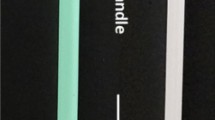Abstract
The aim of this work was to investigate the possibility of secondary and tertiary DNA transfer during laundry. The modes of transfer tested were mixed and separate laundry of worn and unworn garments in household and public washing machines. In addition, the possibility of a background DNA carry-over from a washing machine’s drum was investigated. In the mixed (worn and unworn garments washed together) laundry experiment, 22% of samples from new unworn socks with no traceable DNA prior to experiment produced DNA profiles post-laundry. In the tertiary DNA transfer experiment performed in a public washing machine (unworn garments only), no detectable DNA profiles were observed. Samples collected from the internal drum of 25 washing and drying machines did not produce detectable STR profiles. The implications of these results are discussed in the context of forensic DNA casework analysis.

ᅟA real-life scenario of secondary DNA transfer between worn and unworn garments during machine washing has been evaluated. Experiments demonstrated this scenario is possible (22% of samples) and may in fact result in high quality DNA profiles. On the contrary, testing washing machine’s interior for deposition of biological material between separate washing cycles to serve as a mediator of tertiary DNA transfer resulted in no DNA profiles.

Similar content being viewed by others
References
Goray M, Eken E, Mitchell RJ, van Oorschot RA (2010) Secondary DNA transfer of biological substances under varying test conditions. Forensic Sci Int Genet 4:62–67. doi:10.1016/j.fsigen.2009.05.001
Goray M, Mitchell RJ, van Oorschot RA (2010) Investigation of secondary DNA transfer of skin cells under controlled test conditions. Leg Med 12:117–120. doi:10.1016/j.legalmed.2010.01.003
Ladd C, Adamowicz MS, Bourke MT, Scherczinger CA, Lee HC (1999) A systematic analysis of secondary DNA transfer. J Forensic Sci 44:1270–1272. doi:10.1520/JFS14599J
Lowe A, Murray C, Whitaker J, Tully G, Gill P (2002) The propensity of individuals to deposit DNA and secondary transfer of low level DNA from individuals to inert surfaces. Forensic Sci Int 129:25–34. doi:10.1016/S0379-0738(02)00207-4
Wickenheiser RA (2002) Trace DNA: a review, discussion of theory, and application of the transfer of trace quantities of DNA through skin contact. J Forensic Sci 47:442–450
Kamphausen T, Fandel SB, Gutmann JS, Bajanowski T, Poetsch M (2015) Everything clean? Transfer of DNA traces between textiles in the washtub. Int J Legal med 129:709–714. doi:10.1007/s00414-015-1203-5
Brayley-Morris H, Sorrell A, Revoir AP, Meakin GE, Court DS, Morgan RM (2015) Persistence of DNA from laundered semen stains: implications for child sex trafficking cases. Forensic Sci Int Genet 19:165–171. doi:10.1016/j.fsigen.2015.07.016
Walsh PS, Metzger DA, Higuchi R (1991) Chelex-100 as a medium for simple extraction of DNA for Pcr-based typing from forensic material. BioTechniques 10:506–513. doi:10.2144/000114018
Barash M, Reshef A, Brauner P (2010) The use of adhesive tape for recovery of DNA from crime scene items. J Forensic Sci 55:1058–1064. doi:10.1111/j.1556-4029.2010.01416.x
Kita T, Yamaguchi H, Yokoyama M, Tanaka T, Tanaka N (2008) Morphological study of fragmented DNA on touched objects. Forensic Sci Int Genet 3:32–36. doi:10.1016/j.fsigen.2008.09.002
Quinones I, Daniel B (2012) Cell free DNA as a component of forensic evidence recovered from touched surfaces. Forensic Sci Int Genet 6:26–30. doi:10.1016/j.fsigen.2011.01.004
Daly DJ, Murphy C, McDermott SD (2012) The transfer of touch DNA from hands to glass, fabric and wood. Forensic Sci Int Genet 6:41–46. doi:10.1016/j.fsigen.2010.12.016
Meakin G, Jamieson A (2013) DNA transfer: review and implications for casework. Forensic Sci Int Genet 7:434–443. doi:10.1016/j.fsigen.2013.03.013
Goray M, Fowler S, Szkuta B, van Oorschot RA (2016) Shedder status—an analysis of self and non-self DNA in multiple handprints deposited by the same individuals over time. Forensic Sci Int Genet 23:190–196. doi:10.1016/j.fsigen.2016.05.005
Kamphausen T, Schadendorf D, von Wurmb-Schwark N, Bajanowski T, Poetsch M (2012) Good shedder or bad shedder—the influence of skin diseases on forensic DNA analysis from epithelial abrasions. Int J Legal Med 126:179–183. doi:10.1007/s00414-011-0579-0
Bahl A, Pfenninger M (1996) A rapid method of DNA isolation using laundry detergent. Nucleic Acids Res 24:1587–1588. doi:10.1093/nar/24.8.1587
Nasiri H, Forouzandeh M, Rasaee MJ, Rahbarizadeh F (2005) Modified salting-out method: high-yield, high-quality genomic DNA extraction from whole blood using laundry detergent. J Clin Lab Anal 19:229–232. doi:10.1002/jcla.20083
Pusch C (1997) A simple and fast procedure for high quality DNA isolation from gels using laundry detergent and inverted columns. Electrophoresis 18:1103–1104. doi:10.1002/elps.1150180713
Bajpai D, Tyagi VK (2007) Laundry detergents: an overview. J Oleo Sci 56:327–340
Farmen RK, Cortez P, Frøyland ES (2008) Spermatozoa recovered on laundered clothing. Forensic Sci Int Genet Suppl Ser 1:418–420. doi:10.1016/j.fsigss.2007.10.218
Jobin RM, De Gouffe M (2003) The persistence of seminal constituents on panties after laundering. Significance to investigations of sexual assault. J Can Soc Forensic Sci 36:1–10. doi:10.1080/00085030.2003.10757551
Kafarowski E, Lyon A, Sloan M (1996) The retention and transfer of spermatozoa in clothing by machine washing. J Can Soc Forensic Sci 29:7–12. doi:10.1080/00085030.1996.10757042
Author information
Authors and Affiliations
Corresponding author
Electronic supplementary material
Supplemental Table 1
(DOCX 20 kb)
Rights and permissions
About this article
Cite this article
Voskoboinik, L., Amiel, M., Reshef, A. et al. Laundry in a washing machine as a mediator of secondary and tertiary DNA transfer. Int J Legal Med 132, 373–378 (2018). https://doi.org/10.1007/s00414-017-1617-3
Received:
Accepted:
Published:
Issue Date:
DOI: https://doi.org/10.1007/s00414-017-1617-3




